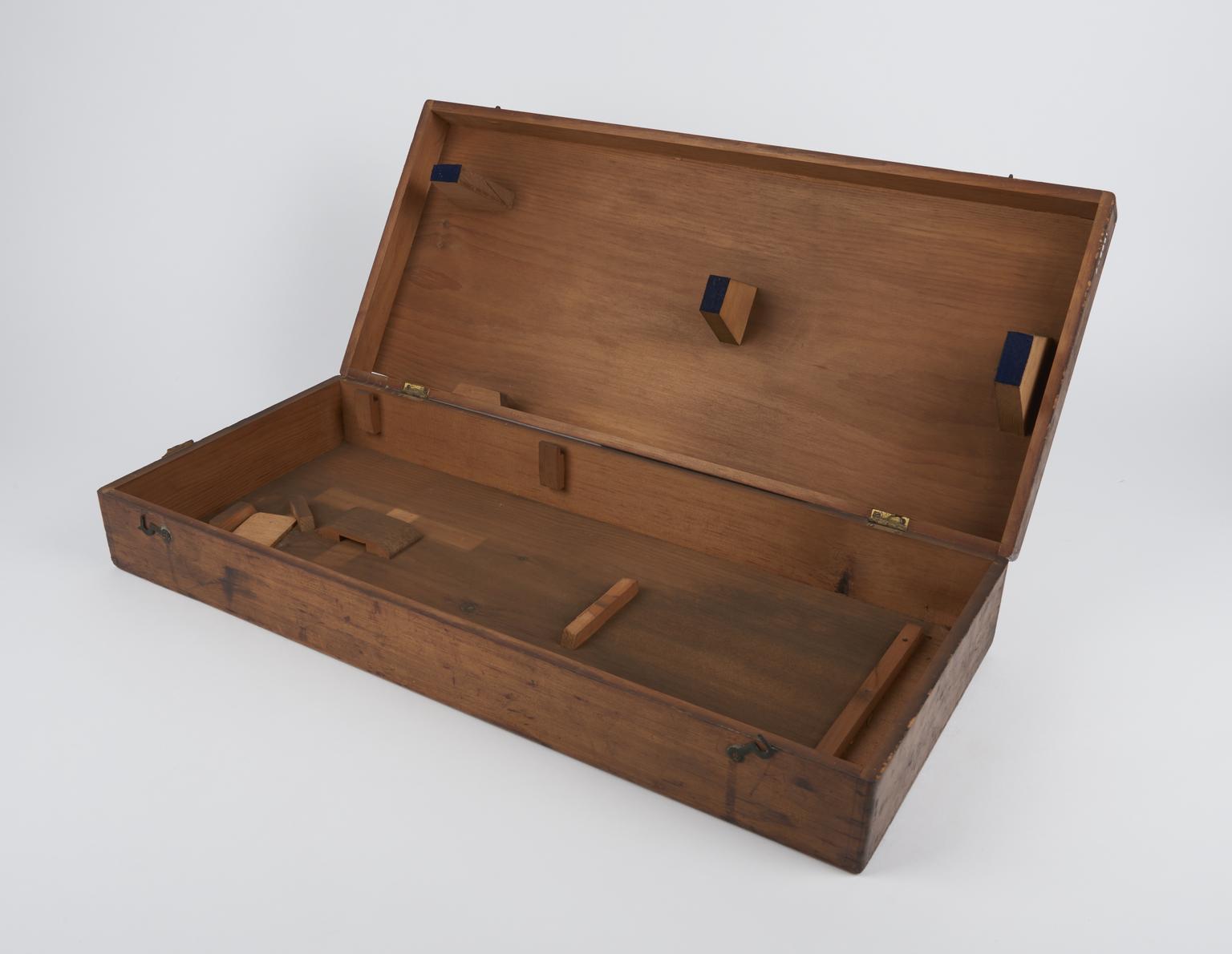
Case for C.V. Boys' curve drawing integrator
Case for C.V. Boys' curve drawing integrator, designed c. 1881
- Materials:
- wood
- Object Number:
- 1885-7 Pt1
- type:
- case - container
- Image ©
- The Board of Trustees of the Science Museum





C.V. Boys' integraph with case, designed c. 1881
Sir Charles Vernon Boys was a British physicist best known for his work on gravitation. Although, he didn’t recognise himself as a mathematician, Boys was also a mathematical instrument maker who invented this type of integrating machine, known as integraph in 1881. Around the same time mathematician Bruno Abdank Abakanowicz independently invented a similar device. An integraph is an instrument that can mechanically get the integral curve corresponding to a given curve, meaning the area between the curve and a given straight line, and so it can graphically solve differential equations.
Boys described his instrument in the Philosophical Magazine in 1881 envisioning it as ‘an aid to teach physics to students not familiar with the principles of integral calculus and in illustrating those principles themselves.’ However, it doesn’t seem that it was widely used for teaching. Integration is one of the two main questions in calculus, the study of anything that changes or moves. When represented in a mathematical function, the ways that the change happens have proven incredibly important in real world applications. Before computers, integraphs were particularly useful for difficult calculations and problems faced by engineers in shipbuilding, bridge and iron construction, earth transports, technical optics and ballistics.

Case for C.V. Boys' curve drawing integrator, designed c. 1881
C.V. Boys' curve drawing integrator, designed c. 1881. Comes with a drawinig component.




